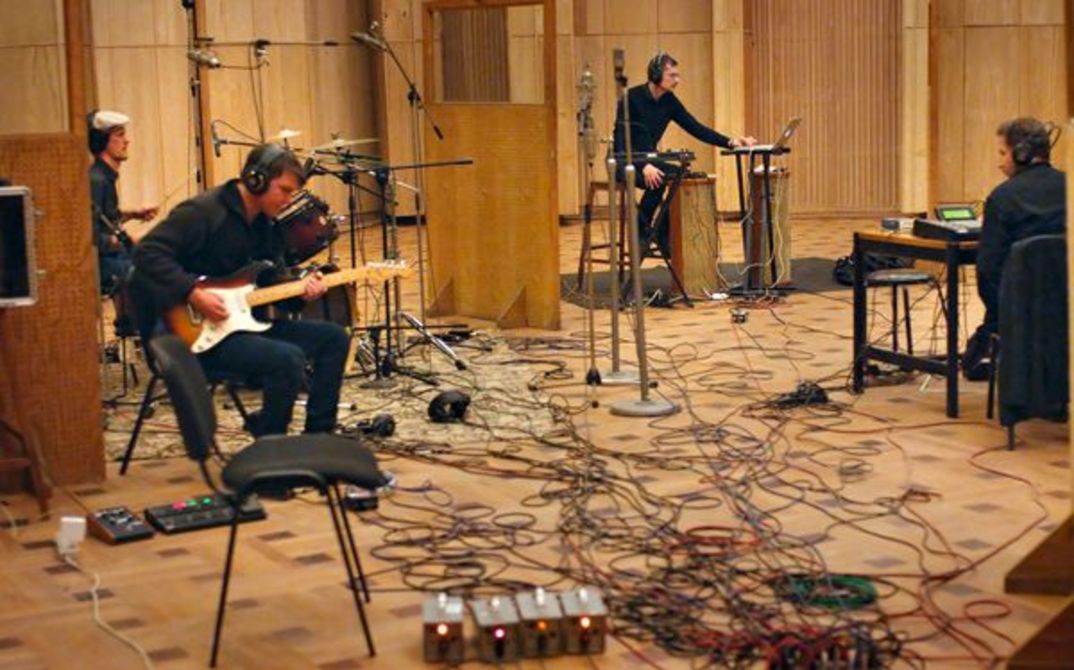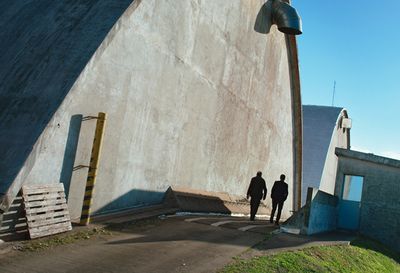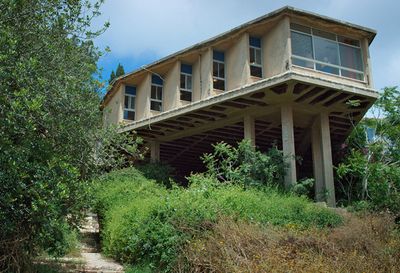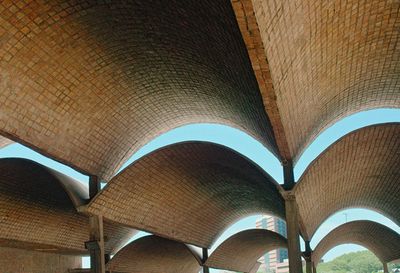In STREETSCAPES [DIALOGUE], you stage a conversation with psychoanalyst Zohar Rubinstein before the backdrop of buildings by Eladio Dieste and various others, with American actor John Erdman in the role of the filmmaker and Argentinian director Jonathan Perel in the role of the psychoanalyst. Was the conversation always intended to form some sort of script?
No. That only emerged over the course of the five-day conversation, which is what’s unusual about the film: it’s during the conversation itself that the director comes up with the idea of making the film we see. It’s there that a temporal inversion takes place. The film depicts a process that’s actually impossible to depict. But I asked Zohar beforehand if there was any reason why I couldn’t record our conversation, as I was worried I might forget something. That obviously goes against standard psychoanalytical practice. As it was clear to him that we weren’t doing any sort of classical psychoanalysis, but rather an intervention or “marathon”, as he called it, he was fine with it.
The conversation between the two of you also revolves around the idea of creative blocks and the strength needed to bring a work to complete. What made you want to get four films off the ground at the same time?
The four films were actually made over the course of three years. I shot 2+2=22[THE ALPHABET] in October 2013 already, but then I didn’t know where to go with it and put it aside. Talking to Zohar suddenly provided me with the solution as to how the films could be made to fit together. The dialogue with the psychoanalyst is obviously the key to the other films. I edited the dialogue down to the parts that focus on filmmaking. I originally had 260 pages, of which 60 remained at the end. The basic structure is an analysis of filmmaking that then itself becomes a film. My architecture films were often criticised for not including any sort of text, for showing spaces but not explaining anything. This is what now takes place in the third film. In STREETSCAPES [DIALOGUE], the filmmaker recounts what makes sense to him when making films. In this sense, these four films each offer explanations for one another.
You’ve brought your architecture films together under the title of “Photography and beyond”. Why photography and not cinematography?
I do the framing and while I’m preparing the image, Till Beckmann takes care of the technical side of things so that an optimal image is created. I see framing as a photographic act: setting out the frame in full awareness of what you’re still going to film or what you’ve already filmed. That’s a cinematographic decision, but at the same time, I think that each individual image has to be composed in such concentrated fashion that it can stand for itself, rather than just filling in a gap or being included for editing purposes. That’s the same compositional effort also found in photography. Yet the element of time plays a part here too. Duration and editing are always an intervention into how time is constructed, almost like in science fiction.
The approach to framing used in your architecture films has developed into a sort of trademark of yours. Architectural photography is usually much more conservative than your way of grasping spaces photographically.
That came about on the one hand from my features. “Die Wiese der Sachen” and “Der zynische Körper” were already to a large extent devoted to architecture, the only difference being that there were still actors wandering around and saying stuff. But I wanted to get away from such foreground-background relationships, as I felt that the so-called background was just as important as the foreground. When I left out the actors, I could, of course, devote myself far more to spaces. All spaces have a particular language and you have a particular sense of them. You approach such spaces, which also takes place via the soundtrack, of course, and place your body within each one, as it were. The photograph emerges from how I react to this space. I luckily don’t have the same problem as architecture photography, whereby everything has to be encapsulated within three images. I have entire sequences and can thus put much more complicated spaces back together. You call it a trademark, but such films actually never existed before. The first of them were shown at the Forum in 2001. I shot them in the 1990s and thought that it was a crucial idea, yet also a simple one, to enter buildings and show how the rooms unfold within them. I thought that there must already be thousands of films like this, but there weren’t. I don’t want to use that dumb expression “unique selling point”, but what you refer to as trademark just developed from the logic I apply to space. Everyone experiences space differently.
If I may equate you with the protagonist of STREETSCAPES [DIALOGUE], which is, of course, a fiction film, then you describe yourself as a nomad equally capable of being in Berlin or in a hotel room in Montevideo to which you have no real connection. Yet architecture presupposes the very opposite of this. Whether public architecture like the Akademie der Künste where we are right now or residential architecture: buildings are immovable, they seek to create a home.
I sometimes fantasise about what would it be like if I actually lived in the house I’m filming. Sometimes it’s a horrible thought. Architecture takes on so many different tasks. Let’s take Bickels’ kibbutz architecture, for example: I would have loved to live in such a context. But this context hardly exists any more or hasn’t yet re-emerged. What I find interesting about all the many architectures I now have in my head is that I can lie down and say to myself: now I can remember exactly how it was being in one place or another. It’s like taking a holiday in your own mind – thanks to the brain’s odd capacity to conjure up spaces anew. There’s something soothing about that. But I’m interested in a wide range of different constructions, particularly in relationship to film, and not the one dream house built for me. And I’m equally interested in all the myriad tasks linked to construction: social housing, cultural buildings, bridges, engineering structures. I’m interested in bridges but I wouldn’t like to live under one.
Do you sometimes dream of architecture?
Yes, very much so, that’s what my next project is about. It’s about the grammar of dreams, about jumping back and forth in time or inverting it, about the ruptures in how you experience a dream and the impossibility of it ever being repeated. And architecture has always played a big part in my dreams, also constructions of a threatening nature. I also explored that in the discussion with Zohar Rubinstein.



